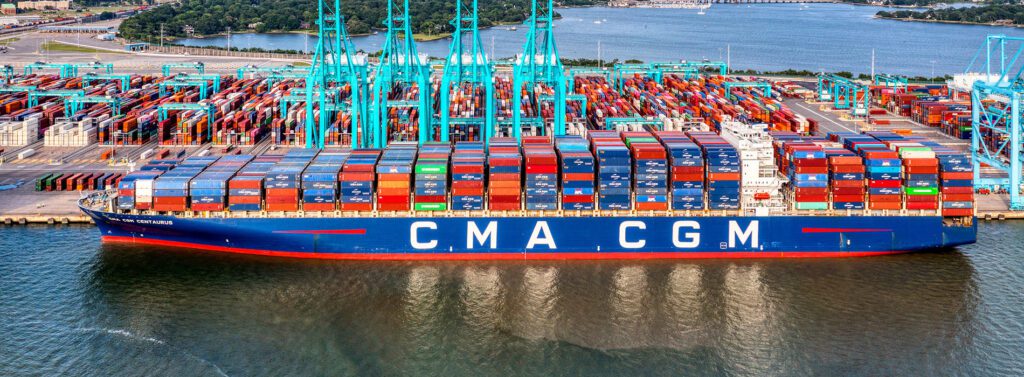Digital twins are highly realistic, extremely detailed digitized versions of physical objects and locations. Widely used for prototyping new products and planning site remodels, these resources also help supply chain professionals streamline port operations. Real-life case studies reveal how leaders of small ports can maximize such investments to optimize outcomes.
Read also: Supply Chain Digital Twin Industry Insights: USD 8.7 Billion Revenue by 2033
Accelerate Emergency Responses
Modern ports are busy, essential hubs requiring ongoing coordination. Unexpected events quickly derail operations and may risk lives and property if not well-managed. Singaporean government officials aim to curb adverse outcomes with a digital twin that helps users plan for chemical spills and other pollution issues.
The model — which includes artificial intelligence and predictive analytics — will also support workers’ handling of vessel refueling by reinforcing safe practices for products such as ammonia and methanol. Because the tool compiles data from aerial drone footage and real-time traffic content, it enhances situational awareness and supports resource deployment across teams. Detailed weather visualizations enhance preparedness to reduce preventable delays, too.
Despite multifunctional digital twins being inaccessible to some operators of small ports, they can get inspired by this case study and pinpoint the most likely sources of unwanted events. Building tools to target those should cause measurable and meaningful results.
Elevate Safety
Many port leaders invest in digital twin technologies to lower accident risks and increase worker productivity. Some strategic deployments center on essential equipment, keeping it running smoothly and preventing dangerous or disruptive failures. Others enable productive activities across facilities, protecting against collisions, labor shortages and other adverse events that pose supply chain threats.
Antwerp-Bruges — Europe’s second-largest port — oversees over 300,000 shipping movements annuallyand leaders wanted to eliminate blind spots. They developed a digital twin that receives information from 460 cameras and 22 radars. It allows officials to scan the entire operational area and prepare for incoming ships. This high-performance traffic system will increase safety and efficiency while improving employee coordination.
Smaller ports often have comparatively modest budgets, but their executives can still reap the well-documented benefits of digital twins. Choosing the project scope is an excellent first step that encourages people to focus on goals and challenges. Employee feedback can also reveal the riskiest or most time-consuming activities, which may be among the best candidates for technology-enabled process improvements.
Launching a small pilot and expanding it as resources allow begins with deciding what to measure and choosing which sensors can gather that information. Then, leaders can assess how the digital twin excels and identify areas for improvement before rolling it out more widely.
Enhance Collaboration
Digital twin technology can also facilitate data sharing with law enforcement officials, first responders or others who may require dependable, real-time information about a facility’s activities. That was one of the goals for a resource rolled out at the Port of Corpus Christi. This crude export terminal spans dozens of miles, increasing the need for monitoring and ongoing operational awareness.
It can geolocate every asset to within 1,000 feetgiving officials photorealistic, 3D data to peruse. The tool allows users to click on individual vessels to see their locations, retrieve contact details and assess whether ships can successfully navigate the port.
Decision-makers previously used dozens of systems that could not communicate with each other. However, this upgrade supports better communication, helping authorities work together during emergencies or maintain productive operations.
Leaders of smaller ports hoping to replicate this success should focus on the most common collaborative tasks and assess how digital twins could improve those. That approach can generate the biggest quick wins and indicate how soon to scale up implementation.
Improve Decision-Making
Executives who use digital twins or understand how they work become interested in saving money, reducing waste and achieving other goals that support the bottom line. Research shows 29% of global manufacturers use these tools, often to avoid downtime and identify bottlenecks. The applications can help them do more with less, reducing spending and development time on physical prototypes or illuminating process inefficiencies.
A university team sought to bring some of these advantages to Hamburg, the site of Germany’s largest seaport. Participants hoped a digital twin could support executives in making challenging decisions under pressure, providing reliable data to understand how equipment, processes and other activities combine for successful operations.
Additionally, the digital twin will retrieve past data to predict future events and aid planning for potential scenarios. The group believes this method can optimize resource usage and minimize negative environmental impacts.
Parties supervising smaller ports can adopt a similar strategy by choosing specific decision-making tasks for the digital twin to support. Whether they relate to labor needs or vessel movements, giving the tool a limited focus should lower development costs, increasing the technology’s accessibility to those with modest budgets.
Learn What Works Well
These real-life case studies help executives determine the most impactful ways to use digital twins at ports. Studying examples of peers’ success shows leaders the possibilities and encourages them to adapt those strategies to align with their resources, time frames and other factors.

